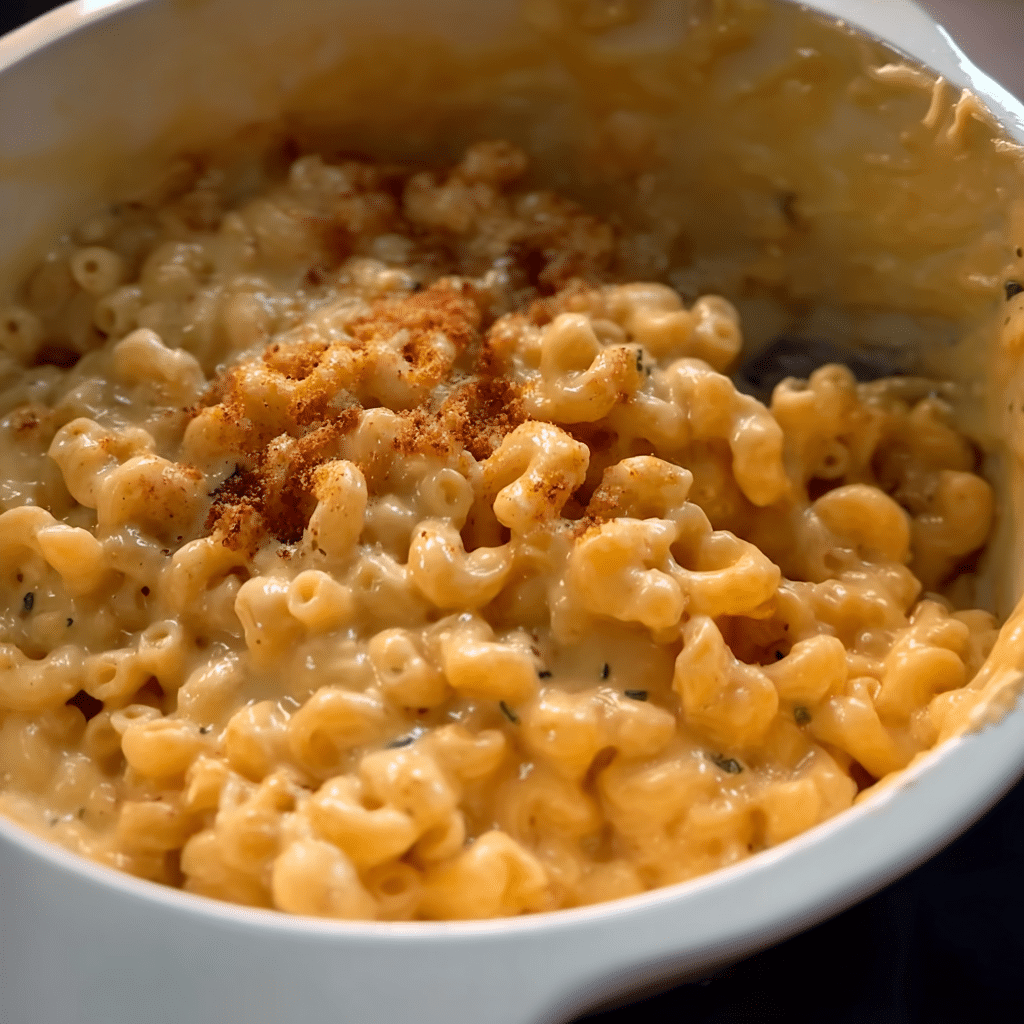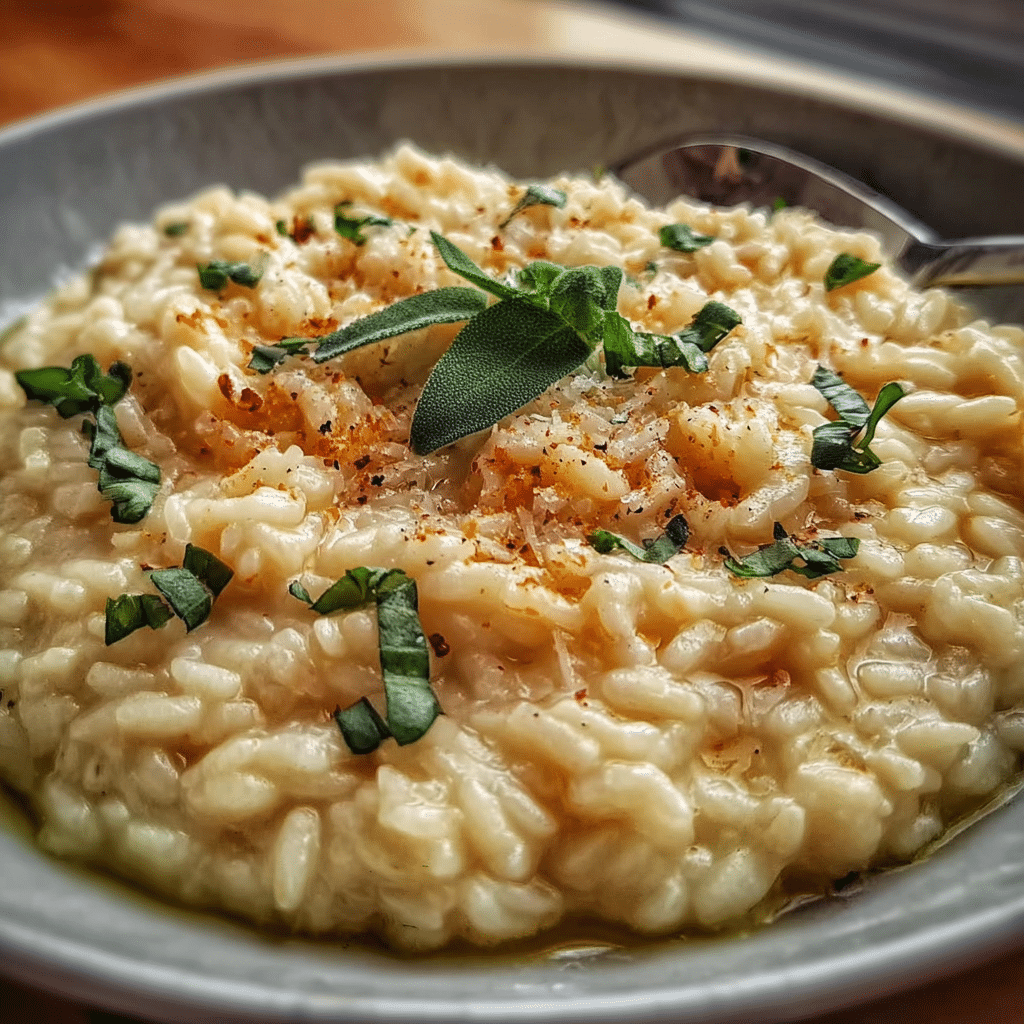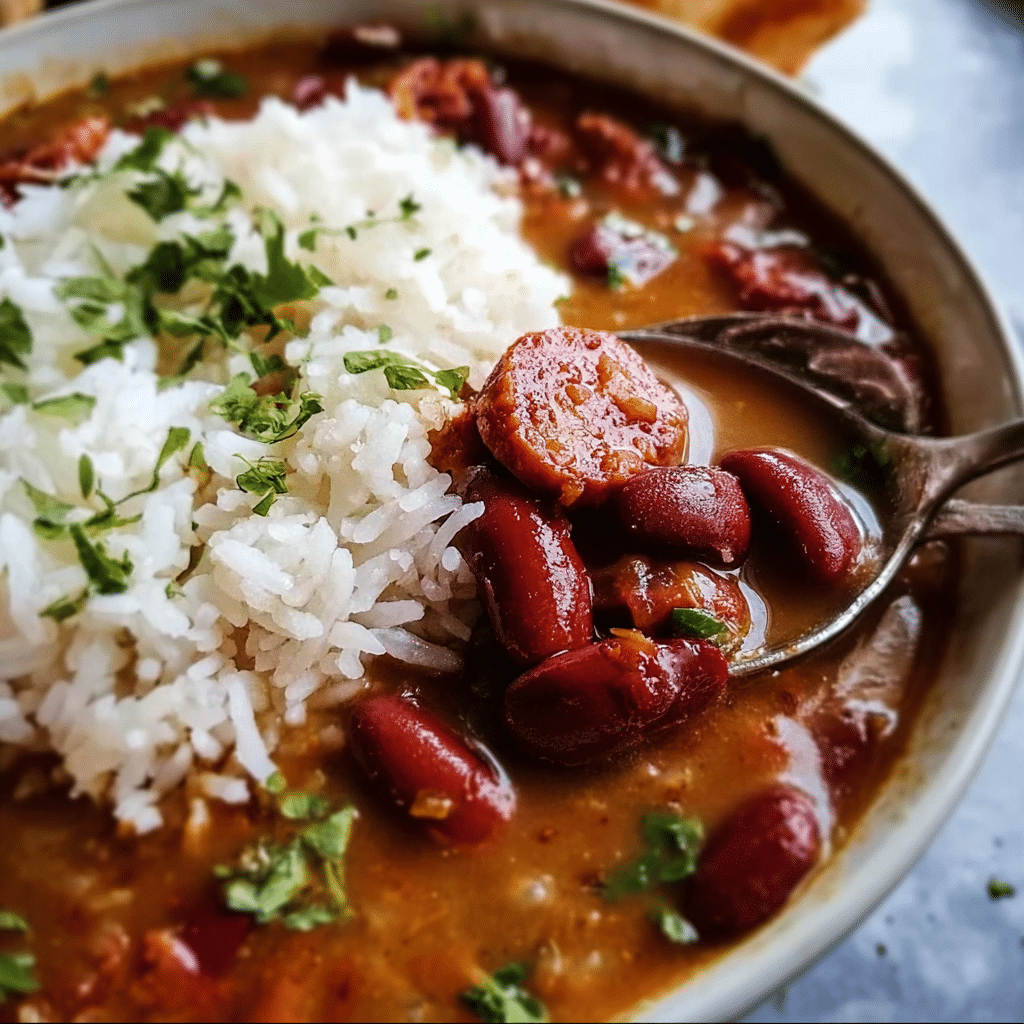One pot mac is more than just a dish; it’s a comforting embrace on a busy weeknight, a nostalgic reminder of family gatherings, and a canvas for creativity in the kitchen. I remember the first time I stumbled upon this delightful recipe; it was a chilly autumn evening, and I was flipping through a friend’s cookbook, hoping to find something quick yet satisfying for dinner. As I landed on the recipe for one pot mac and cheese, I felt an immediate connection. The thought of a creamy, cheesy pasta that required minimal cleanup was like music to my ears. I could almost taste it, and I knew I had to try it.

The magic of one pot mac lies in its simplicity. Instead of the traditional method of boiling pasta, preparing sauce separately, and then combining the two, this method allows you to cook everything in one pot. This not only saves time but also infuses the pasta with all the rich flavors of the cheese and seasonings as it cooks. I found this method particularly appealing as a busy parent; it meant less time in the kitchen and more time with my family. As I stirred the bubbling pot, I was filled with anticipation, and when I finally served it, the delighted expressions on my family’s faces made it clear that I had discovered something special.
The Story Behind This Recipe
The origins of macaroni and cheese can be traced back to the 18th century, with roots in Italy and France. However, it wasn’t until the dish made its way to America that it truly evolved into the comforting one pot mac we know and love today. The traditional recipe often involves a béchamel sauce, made from butter, flour, and milk, combined with pasta and cheese. But the one pot variation simplifies this process, allowing the home cook to create a creamy sauce and cook the pasta all in one fell swoop. This adaptation has made it a favorite among busy families who crave a delicious meal without a lot of fuss.
One pot mac is special not only because of its convenience but also due to its versatility. You can customize it to your family’s tastes by adding vegetables, protein like chicken or bacon, or even experimenting with different cheeses. This adaptability makes it an ideal choice for those who want to please picky eaters or incorporate seasonal ingredients. For instance, in the fall, I love adding roasted butternut squash, while in the summer, fresh tomatoes and basil bring a burst of flavor.
Why You’ll Love This Dish
This recipe is perfect for busy families looking for quick dinner solutions because it eliminates the chaos of multiple pots and pans. With just one pot to clean, you can spend more time enjoying your meal and less time worrying about the mess. Plus, the warm, cheesy goodness of one pot mac is sure to please everyone at the table. It’s a dish that transcends age; my kids adore it, and even my picky eaters can’t resist a bowl of creamy mac and cheese.
Seasonally, one pot mac is incredibly versatile. In the winter months, it serves as a cozy comfort food, perfect for curling up on the couch after a long day. During the spring and summer, it can be lightened up with fresh herbs and vegetables, making it a delightful dish for warm-weather gatherings. No matter what time of year, one pot mac holds a special place in my heart and kitchen.
The emotional connection I have with one pot mac goes beyond mere flavor; it’s about the memories created around the table. I recall family dinners where we would share stories, laugh, and enjoy the simple pleasure of a homemade meal. Each time I make this dish, it brings back those cherished moments, reminding me of the importance of family and food in our lives.
In this guide, I promise you’ll learn the ins and outs of creating the perfect one pot mac. From the basic recipe to tips for customization and even some secrets to achieving that creamy texture, you’ll be well-equipped to whip up this delightful dish anytime you desire. So grab your favorite pot, and let’s dive into the world of one pot mac together!
The Rich History and Cultural Significance of one pot mac
The rich history and cultural significance of one pot mac go far beyond the bowl of cheesy goodness that sits before you. To truly appreciate this dish, we must take a closer look at its origins, regional variations, and the evolution that has led to the beloved one pot mac we know today. Macaroni and cheese as a concept dates back to the early 1700s, with roots in Italy, where a dish called “maccheroni” was created. The earliest known recipe was published in a 1770 cookbook by Elizabeth Raffald, which called for a dish of macaroni mixed with cheddar cheese.
Origins and History
As the dish traveled across the Atlantic to America, it became synonymous with comfort food. During the Great Depression, macaroni and cheese became a staple due to its affordability and the ease with which it could be prepared. This was particularly appealing for families looking to stretch their food budgets. Over the years, the dish evolved, and variations began to emerge, with different regions putting their unique spin on it. In the Southern United States, for example, you’ll find baked versions with a crispy topping, while in the Northeast, the creamy, stovetop preparation gained popularity.
The one pot mac emerged as a response to modern cooking needs, particularly as families grew busier. The simplicity of cooking everything in one pot appealed to home cooks looking for a quick meal solution without sacrificing flavor. This adaptation has become a symbol of convenience in the kitchen, allowing for a hearty dinner with minimal cleanup.
Cultural Significance
One pot mac is not just a meal; it’s a cultural icon that evokes feelings of nostalgia and warmth. It is often served at family gatherings, potlucks, and celebrations, making it a dish that brings people together. In many households, it has become a rite of passage for children learning to cook, as the recipe is simple enough to allow for creativity while still producing a delicious end result. The act of sharing a bowl of one pot mac can foster connections and create lasting memories, making it a centerpiece for family bonding.
Famous chefs have also embraced this dish, each adding their unique touch. From upscale restaurants featuring gourmet versions with truffle oil and lobster to home cooks perfecting their family recipes, one pot mac has found a place in kitchens around the world. Its adaptability allows for endless experimentation, making it a canvas for culinary creativity.
Nutritional Benefits
While one pot mac is often viewed as indulgent, it can also be a vehicle for nutrition. By incorporating vegetables such as spinach, broccoli, or peas, you can elevate the dish’s nutritional profile while adding vibrant colors and textures. Additionally, swapping traditional pasta for whole grain or legume-based options can provide added fiber and protein, making it a more balanced meal.
The key to enjoying one pot mac is to embrace its versatility. It’s a dish that can be tailored to meet dietary preferences, whether you’re vegetarian, gluten-free, or looking for a lighter version. By making smart ingredient choices, you can enjoy all the comfort of one pot mac without compromising on nutrition.
In conclusion, the history of one pot mac is rich with cultural significance and delicious evolution. From its humble beginnings to its status as a beloved family favorite, this dish continues to adapt and thrive in kitchens across the globe. As we delve deeper into the specifics of preparing this delightful meal, remember that each bowl holds a story, a connection, and a promise of warmth that transcends generations.
Essential Ingredients for Perfect one pot mac
When it comes to making a delicious and comforting dish like one pot mac, the ingredients you choose can make all the difference. The simplicity of this recipe allows each ingredient to shine, contributing to the creamy texture and rich flavor that we’re all after. Below, I’ll share the essential ingredients you’ll need, along with insights into their roles, quality indicators, and even some tips for substitutions and storage.
Essential Ingredients
- 1 pound uncooked pasta: The type of pasta you choose can have a significant impact on the final dish. For traditional one pot mac, elbow macaroni is the classic choice, but feel free to experiment with shells or cavatappi for a fun twist.
- 3 cups water: This is essential for cooking the pasta. The water will help to create the creamy sauce once we add the milk and cheese.
- 2 cups milk: Whole milk is preferred for its richness, but you can use 2% or even a non-dairy alternative if you’re looking for a lighter dish or have dietary restrictions.
- 1 teaspoon Dijon mustard: This ingredient adds a subtle tanginess that enhances the overall flavor profile of the one pot mac. It’s a secret weapon that makes your mac and cheese taste gourmet!
- 1 teaspoon fine sea salt: Salt not only brings out the flavors in your dish but also is essential for seasoning the pasta while it cooks. Make sure to taste and adjust as needed.
- 1 teaspoon garlic powder: Garlic powder adds depth and a savory note that complements the cheese beautifully. You can also use fresh garlic if you prefer a more robust flavor.
- 2 to 4 cups (8 to 16 ounces) freshly-grated sharp cheddar cheese: The star of the show! Sharp cheddar provides a bold flavor and melts beautifully. Freshly grating your cheese is key to preventing it from clumping.
- 1 cup (1 ounce) finely-grated Parmesan cheese: This cheese adds a nutty dimension and enhances the creaminess. Grated Parmesan can elevate your one pot mac to restaurant-level quality.
- Freshly-ground black pepper, to taste: A sprinkle of black pepper adds warmth and complexity. Don’t skip this step; it’s the finishing touch that ties everything together.

One Pot Mac & Cheese
Ingredients
- 1 pound uncooked pasta
- 3 cups water
- 2 cups milk
- 1 teaspoon Dijon mustard
- 1 teaspoon fine sea salt
- 1 teaspoon garlic powder
- 2 to 4 cups (8 to 16 ounces) freshly-grated sharp cheddar cheese (see note below)
- 1 cup (1 ounce) finely-grated Parmesan cheese
- freshly-ground black pepper, to taste
Instructions
- Cook the pasta. Combine the pasta, water, milk, Dijon, sea salt and garlic powder in a large stockpot. Heat over medium-high heat, stirring the pasta once every few minutes, until the water reaches a boil. Adjust heat as needed to maintain a rolling boil. Continue cooking the pasta, stirring once or twice per minute, until the pasta is *just* barely al dente. (Cooking time will depend on the shape of pasta that you use, so please keep a close eye on it.) Remove pot from heat.
- Remove excess water (if needed). Check to see how much starchy pasta water remains in the pot. If it seems that there is more than 1/2 cup or so, dip a heatproof measuring cup in to remove and save the excess water, then set it to the side. (If by chance there is no starchy pasta water left, please add 1/2 cup hot water to the pot.)
- Add cheese. Add the cheese to the pasta and gently stir until completely melted. If the pasta seems too dry, stir some of the reserved starchy pasta water back in as needed.
- Season. Taste and season with additional salt if needed.
- Serve. Serve warm, garnished with a few twists of black pepper and enjoy!
Shopping Tips
Quality ingredients are crucial for making the perfect one pot mac. When shopping for pasta, look for brands that use semolina flour, as this will give you a firmer texture. For cheese, try to purchase from the deli section instead of pre-packaged options. Freshly grated cheese not only melts better but also tastes superior. Aim for a sharp cheddar with a rich color—this often indicates a good aging process.
Milk should be fresh and preferably from a local dairy, but if you’re opting for non-dairy alternatives, check the labels for added sugars or preservatives. When it comes to spices like garlic powder and Dijon mustard, look for organic options if possible, as they often lack artificial additives.
Substitutions and Alternatives
If you’re looking for dietary alternatives, there are plenty of substitutions you can make without sacrificing flavor. For gluten-free options, consider using gluten-free pasta, which is widely available now. If you’re lactose intolerant or vegan, you can replace milk with almond, soy, or oat milk, and for the cheese, there are some excellent vegan cheese brands that melt well.
For those watching their sodium intake, you can reduce the amount of salt or use a salt substitute. Remember, adjusting the recipe can change flavors slightly, so tasting as you go becomes even more important.
As for storage, keep your uncooked pasta in a cool, dry place. Dried pasta has a long shelf life, so you can buy in bulk. Milk should be stored in the fridge and used by the expiration date on the carton. Grated cheese can be stored in the refrigerator for about a week, but for longer storage, consider freezing it in airtight containers.
With these ingredients in hand, you’re well on your way to crafting a satisfying and creamy one pot mac that will wow your family and friends. The beauty of this dish lies in its versatility and the comforting nostalgia it brings—whether it’s a busy weeknight or a leisurely weekend, this recipe is sure to become a favorite in your home.
Detailed Step-by-Step one pot mac Cooking Instructions
Now that you have assembled all the ingredients for your one pot mac, it’s time to dive into the cooking process. The beauty of this dish is not only in its flavor but also in its simplicity. Let’s break down the steps to ensure your mac and cheese turns out creamy, cheesy, and utterly delicious.
Preparation Steps
- Gather Your Ingredients: Before you start cooking, make sure all your ingredients are measured and ready to go. This is what chefs refer to as ‘mise en place’, which means ‘everything in its place.’ It helps streamline the cooking process and reduces the chances of forgetting an ingredient.
- Grate the Cheese: Using freshly grated cheese is essential for achieving that perfect melt. If you haven’t yet, grate your sharp cheddar and Parmesan cheese. This step can be done in advance to save time, but freshly grating right before cooking ensures maximum creaminess.
- Prepare Your Cooking Space: Clear your countertop and gather all necessary pots, pans, and utensils. For this recipe, you will need a large pot or a Dutch oven to accommodate the pasta and sauce.
Cooking Process
- Combine the Pasta and Water: In your pot, combine 1 pound of uncooked pasta with 3 cups of water. Bring this mixture to a boil over medium-high heat. Stir occasionally to prevent the pasta from sticking to the bottom of the pot.
- Add Milk and Seasonings: Once the water is boiling, add 2 cups of milk, 1 teaspoon of Dijon mustard, 1 teaspoon of fine sea salt, and 1 teaspoon of garlic powder. Stir to combine all the ingredients thoroughly. The milk will create a nice creamy base for your sauce.
- Cook the Pasta: Allow the mixture to come back to a gentle boil. Reduce the heat to medium-low and let it simmer. The pasta will absorb the milk and water, creating a rich sauce. This should take around 10-12 minutes. Stir occasionally to ensure even cooking and prevent clumping.
- Add the Cheese: When the pasta is tender and the sauce is thickened, remove the pot from the heat. Gradually stir in 2 to 4 cups of freshly grated sharp cheddar cheese and 1 cup of finely grated Parmesan cheese. The residual heat will melt the cheese, creating a luscious, creamy texture. If the sauce seems too thick, you can add a splash more milk to loosen it up.
- Season to Taste: Finally, add freshly-ground black pepper to taste. This is where you can adjust the seasoning based on your preferences. Taste the one pot mac and see if it needs more salt or pepper.
Final Assembly
- Plate the Dish: Once everything is well combined and creamy, serve your one pot mac immediately. You can garnish with additional cheese, a sprinkle of parsley, or even some crispy bacon bits if that suits your fancy.
- Storing Leftovers: If you have any leftovers (which is rare in my house!), let the mac cool to room temperature before transferring it to an airtight container. It can be stored in the refrigerator for up to 3-4 days. To reheat, add a splash of milk to help loosen the sauce back up.
- Common Mistakes to Avoid: One major pitfall is overcooking the pasta. Keep an eye on it and taste as you go. You want it al dente, as it will continue to cook slightly in the residual heat. Another mistake is adding the cheese too early; it should be added off the heat to avoid clumping.
- Chef Secrets: For an extra layer of flavor, consider adding a splash of hot sauce or a bit of fresh herbs like thyme or chives right before serving. This can elevate your one pot mac and make it truly special.
In just about 30 minutes, you’ve created a comforting and creamy one pot mac that is sure to please anyone at your table. The joy of cooking this dish lies not only in its simplicity but also in its ability to bring people together. Enjoy every cheesy bite!
Professional Tips and Techniques for one pot mac
When it comes to crafting the perfect one pot mac, there are a myriad of tips and techniques that can elevate your dish from simple comfort food to a gourmet delight. Having spent countless evenings experimenting in the kitchen, I’ve gathered a treasure trove of insights that not only streamline the cooking process but also enhance the flavor and texture of your mac and cheese. Let’s dive into the nuances that make one pot mac a beloved staple in many households.
Professional Techniques
One pot mac is all about simplicity and flavor, but mastering a few professional techniques can make a significant difference. First and foremost, the type of pasta you choose plays a crucial role. While elbow macaroni is the traditional choice, consider using cavatappi or shells for an interesting twist. Their unique shapes hold onto the cheese sauce better, ensuring a creamy bite every time.
Another technique to consider is the way you cook the pasta. Instead of boiling the pasta separately, cook it directly in the cheese sauce. This method not only infuses the noodles with flavor but also thins out the sauce slightly, allowing it to cling beautifully to the pasta. To achieve this, start by sautéing some aromatics like garlic or onions in your pot before adding the pasta and liquid. The flavors will meld together, creating a richer base for your one pot mac.
A crucial insider secret is the cheese selection. Using a combination of cheeses can elevate your dish from good to unforgettable. Cheddar is a classic choice, but mixing in Gruyère or fontina adds depth and nuttiness. For a little zing, incorporate some pepper jack or a sprinkle of parmesan right at the end for that perfect finishing touch.
Troubleshooting Guide
Even the most seasoned cooks encounter hiccups when preparing one pot mac. One common issue is a grainy sauce. This often happens when the cheese is added too quickly or at too high a temperature. To avoid this, always remove the pot from heat before incorporating your cheese, stirring gently until melted and smooth.
If your sauce turns out too thick, don’t fret! Simply add a splash of milk or broth to loosen it up, stirring continuously until you achieve your desired consistency. On the other hand, if it’s too runny, a quick fix is to mix a bit of cornstarch with cold water and stir it into the sauce while it’s simmering to thicken it up.
Presentation Tips
Presentation is key, especially when serving one pot mac to guests. To create an inviting plate, consider portioning your mac into individual ramekins and topping each with a sprinkle of breadcrumbs and shredded cheese, then broiling them for a few minutes to create a golden crust. This not only adds texture but also makes for an impressive presentation.
Garnish with fresh herbs such as parsley or chives for a pop of color and freshness. A drizzle of truffle oil or hot sauce can also elevate the visual appeal and flavor profile, enticing your guests even before they take their first bite.
Wine and Beverage Pairings
Pairing beverages with your one pot mac can enhance the overall dining experience. A crisp white wine, such as Chardonnay or Sauvignon Blanc, complements the creamy richness of the dish beautifully. For those who prefer beer, a light lager or a pale ale works wonders, cutting through the richness with its refreshing qualities. If you’re in the mood for something non-alcoholic, consider serving sparkling water with a twist of lemon to cleanse the palate.
In conclusion, the beauty of one pot mac lies in its versatility and simplicity. By implementing these professional tips and techniques, you’ll not only troubleshoot common issues but also elevate your dish to new heights. Remember, cooking is an art form, so feel free to experiment and make this dish your own!

Creative Variations and Adaptations of one pot mac
One pot mac is a canvas for creativity, and the potential for variations is vast. Whether you’re looking to spice things up, accommodate dietary restrictions, or simply use what you have on hand, there’s an adaptation for everyone. Let’s explore some creative variations and adaptations of this beloved dish!
Seasonal Variations
Taking advantage of seasonal ingredients can breathe new life into your one pot mac. For example, during the fall, consider incorporating roasted butternut squash and sage for a warm, cozy flavor profile. The sweetness of the squash pairs beautifully with the creamy cheese, creating a comforting dish perfect for chilly evenings.
In the spring, try adding fresh peas and asparagus for a vibrant, green mac that celebrates the season. The bright colors and light flavors will make your dish feel fresh and inviting. In the summer, swap in some diced tomatoes and basil for a Caprese-inspired one pot mac that’s bursting with flavor.
Dietary Adaptations
One pot mac can easily be tailored to fit various dietary needs. For a keto-friendly version, use cauliflower instead of pasta. Simply steam the cauliflower until tender and then mix it with a rich cheese sauce for a low-carb delight. Vegan adaptations are also simple; substitute traditional cheese with a blend of nutritional yeast, cashews, and plant-based milk to create a creamy sauce that’s completely dairy-free.
If gluten is a concern, opt for gluten-free pasta made from rice, quinoa, or chickpeas. These options are widely available and can be used in the same way as traditional pasta, ensuring everyone can enjoy this dish. Additionally, for those who may prefer a spicy kick, consider adding jalapeños or a sprinkle of cayenne pepper to the cheese sauce for an exciting twist.
Creative Twists
Don’t be afraid to think outside the box with your one pot mac! How about a Mexican-inspired version? Incorporate chorizo, black beans, and a hint of lime for a zesty take. Or, if you’re feeling adventurous, try a buffalo chicken one pot mac by mixing in shredded rotisserie chicken coated in buffalo sauce for a kick of flavor.
Another fun idea is to turn your one pot mac into a breakfast dish. Add cooked bacon, scrambled eggs, and a sprinkle of cheese for a hearty morning meal that’s sure to impress. If you have leftovers, consider transforming them into mac and cheese fritters by mixing the mac with breadcrumbs, forming patties, and frying until golden brown. This way, you can enjoy your one pot mac in a whole new light!
In summary, the possibilities for one pot mac variations are endless. From seasonal ingredient swaps to dietary adaptations and international influences, there’s a version for every palate. Embrace your creativity and let your taste buds guide you on this delicious journey!
Storage, Reheating, and Meal Prep for one pot mac
When it comes to cooking, one of the most important aspects to consider is storage, particularly for a dish like one pot mac. Not only does proper storage ensure that your meal stays fresh and delicious, but it also helps you manage leftovers in a way that makes your life easier. Let’s dive into the ins and outs of storing, reheating, and prepping this creamy, cheesy delight.
Short-term Storage
After whipping up a delightful batch of one pot mac, you might find yourself with some leftovers. The first step to keeping your mac and cheese fresh is to let it cool down to room temperature. This is crucial because placing hot food directly into the refrigerator can raise the internal temperature, potentially leading to food spoilage. Once cooled, transfer the mac and cheese into airtight containers. Glass containers with secure lids are ideal because they prevent moisture from getting in, which can affect the texture of your dish.
For short-term storage, the refrigerator is your best friend. One pot mac can generally be stored in the fridge for about 3 to 5 days. Make sure to label your containers with the date you prepared the dish to keep track of freshness. Also, portioning your leftovers into individual servings can be a game-changer. Not only does this make it easier to reheat, but it also helps with portion control if you’re watching your intake.
Freezing and Long-term Storage
If you know you won’t finish your one pot mac within a week, freezing is a great option. To freeze, follow the same cooling process as before. Once cooled, scoop the mac and cheese into freezer-safe containers or heavy-duty freezer bags. When using bags, try to remove as much air as possible before sealing to prevent freezer burn. One pot mac can be stored in the freezer for up to 2 to 3 months. However, for the best taste and texture, aim to eat it within a month.
When you’re ready to enjoy your frozen one pot mac, it’s best to thaw it in the refrigerator overnight. This gradual thawing helps maintain the creamy texture of the cheese. If you’re in a hurry, you can also use the microwave to defrost it, but be careful not to start cooking it again. Once thawed, you can reheat it on the stove or in the microwave. Just add a splash of milk or cream when reheating to restore some of that creamy goodness that might have been lost during freezing.
Reheating Best Practices
Reheating can sometimes be tricky, especially with creamy dishes like one pot mac. The goal here is to bring it back to life without sacrificing flavor or texture. If you’re using the stovetop, place your mac in a saucepan over low heat. Stir frequently and add a little milk or cream to help loosen the cheese sauce and prevent it from drying out. This method allows for a smooth reheat and keeps your dish creamy.
If you prefer the microwave, transfer your one pot mac to a microwave-safe bowl and cover it with a damp paper towel. This helps to retain moisture while it heats up. Start with one minute on high, then stir. Continue heating in 30-second intervals until it’s warmed through. Remember, the microwave can be uneven, so stirring is key to achieving an evenly heated dish.
Meal prep is another fantastic strategy for enjoying one pot mac throughout the week. You can prepare a bigger batch on the weekend and portion it out for easy lunches or dinners. This not only saves time but also allows you to control your ingredients, making it a healthier option than many store-bought alternatives.
Food safety is also a significant consideration when it comes to storing one pot mac. Always ensure that you’re storing it in clean containers and that your refrigerator is operating at the correct temperature (below 40°F). If you notice any unusual smells, colors, or textures, it’s best to err on the side of caution and discard the dish.
In summary, knowing how to properly store, freeze, and reheat your one pot mac can elevate your cooking experience. By following these guidelines, you can enjoy your delicious creation at its best, whether you’re savoring it the next day or weeks later.
Nutritional Benefits and Health Information
One pot mac is not just a comfort food; it also has a nutritional story worth exploring. As you dive into the creamy layers of this dish, you might wonder about its health benefits and how it fits into your dietary needs. Let’s take a closer look at the nutritional profile of one pot mac and how you can enjoy it while maintaining a balanced diet.
Nutritional Profile
At its core, one pot mac consists of pasta, cheese, and often some sort of milk or cream, along with seasonings. The calorie content can vary based on the type of pasta and cheese used, as well as any additional ingredients like vegetables or proteins. On average, a serving of homemade one pot mac can range from 300 to 500 calories, depending on the portion size and ingredients. This makes it a filling option, perfect for a satisfying meal after a long day.
Macaroni, the star of this dish, is primarily a source of carbohydrates, providing the energy needed for daily activities. However, whole grain pasta is an excellent alternative that offers additional fiber, which aids digestion and helps you feel full longer. The cheese, while delicious, contributes not only to the creamy texture but also to the protein and calcium content. A typical serving can provide around 15 grams of protein and significant amounts of calcium, essential for bone health.
Health Benefits
Beyond calories and macronutrients, one pot mac can offer some surprising health benefits, particularly when you start to add in nutrient-dense ingredients. For instance, incorporating vegetables like spinach, broccoli, or bell peppers not only enhances flavor but also boosts the vitamin and mineral content. Leafy greens are rich in vitamin A, C, and K, while adding color to your dish makes it visually appealing.

Moreover, cheese contains conjugated linoleic acid (CLA), which some studies suggest may help reduce body fat and support muscle growth. While it’s important to consume cheese in moderation due to its saturated fat content, the protein it provides can be beneficial, especially for those looking to build or maintain muscle mass.
Dietary Considerations
When it comes to dietary restrictions, one pot mac can be easily modified to suit various needs. For those who are lactose intolerant, using lactose-free cheese or non-dairy alternatives like almond or cashew cheese can make this dish accessible. Gluten-free pasta is also widely available, allowing individuals with gluten sensitivities to enjoy this classic comfort food. If you’re looking to lower calories or fat, you can experiment with reduced-fat cheeses or even substitute some of the cheese with pureed cauliflower, which adds creaminess without the extra calories.
When comparing one pot mac to similar dishes, such as baked macaroni and cheese, it typically has fewer calories because it doesn’t require baking and additional topping ingredients. This makes one pot mac a quicker and simpler option without sacrificing flavor or satisfaction.
In conclusion, one pot mac not only satisfies cravings but also offers a foundation for nutritious eating. By being mindful of your ingredient choices and incorporating healthy modifications, you can enjoy this comforting dish while still adhering to your dietary goals. So, the next time you indulge in one pot mac, you can do so knowing that you’re also nourishing your body in the process.
Frequently Asked Questions About One Pot Mac
One pot mac and cheese Baked
To make a delicious baked one pot mac and cheese, start by cooking your pasta in a large oven-safe pot. Combine your favorite cheeses, such as cheddar and mozzarella, with a creamy base made from milk and butter. Once the pasta is al dente, stir in the cheese mixture and any additional ingredients like cooked bacon or broccoli. Transfer the pot to the oven and bake at 350°F (175°C) for about 20-25 minutes until the top is golden and bubbly. For an extra crispy topping, consider adding breadcrumbs or more cheese on top before baking.
Easy one pot mac & cheese
For an easy one pot mac & cheese, choose a short cooking pasta like elbow macaroni or shells, and cook it directly in a pot with enough water or broth to cover the pasta. Add in milk and cheese once the pasta is nearly done, allowing it to melt and create a creamy sauce. Season with salt, pepper, and any spices you enjoy, such as garlic powder or paprika, to enhance the flavor. This method eliminates the need for draining and extra dishes, making cleanup a breeze. A great tip is to use freshly grated cheese for the best melting results.
Creamy one pot mac and cheese
To achieve a creamy one pot mac and cheese, it’s essential to use a combination of cheeses that melt well, such as Gruyère, fontina, or a blend of cheddar and cream cheese. Begin by cooking your pasta in a mixture of water and milk for added creaminess. Once the pasta is cooked, reduce the heat and gradually stir in your cheese until it’s fully melted and the sauce is smooth. For even more creaminess, consider adding a splash of heavy cream or sour cream before serving. Remember to stir frequently to prevent sticking and ensure an even distribution of the cheese.
One pot mac and cheese with milk
When making one pot mac and cheese with milk, use a mix of milk and broth to cook your pasta for added flavor. Start by boiling the pasta in the liquid until it’s al dente, then reduce the heat and stir in your cheese of choice, allowing it to melt into a creamy sauce. For a richer taste, opt for whole milk or a combination of milk and cream. Additionally, you can enhance the dish with seasonings such as mustard powder or hot sauce for a little kick. Serve immediately for the best texture, as the sauce will thicken as it cools.
One pot mac and cheese for 2
To prepare one pot mac and cheese for two, simply halve the ingredient quantities used in a standard recipe. Use about 1 cup of pasta and adjust the amounts of cheese and liquid accordingly. This makes it easy to whip up a quick meal without leftovers. Consider customizing the recipe by adding protein like diced chicken or vegetables like spinach to make it more nutritious. Cooking in a smaller pot can also help prevent the sauce from drying out, ensuring a creamy texture for your dish.
Best one pot mac and cheese
The best one pot mac and cheese often includes a blend of cheeses for depth of flavor; consider using sharp cheddar, Monterey Jack, and a touch of cream cheese for creaminess. Start by sautéing aromatics like garlic or onion in your pot before adding the pasta and liquid, which enhances the overall flavor. Gradually stir in the cheeses once the pasta is cooked, allowing them to melt completely for a smooth sauce. For a gourmet twist, add ingredients like truffle oil, caramelized onions, or crispy pancetta. Lastly, don’t forget to season generously with salt and pepper to elevate the dish.
Creamy stovetop mac and cheese
For creamy stovetop mac and cheese, begin by cooking your pasta in a large pot with enough water and a splash of milk to create a rich sauce. Once the pasta is al dente, reduce the heat and slowly mix in your choice of cheeses, stirring continuously to achieve a smooth consistency. Adding a tablespoon of butter or cream can further enhance the creaminess of the dish. For a flavorful kick, consider incorporating spices like paprika or a dash of hot sauce. Serve immediately to enjoy the optimal texture before it thickens as it cools.
One pot stovetop mac and cheese
One pot stovetop mac and cheese is a simple and quick dish that requires only one pot, making it perfect for busy weeknights. Start by boiling your pasta in a mixture of water and milk, which creates a creamy base. Once the pasta is cooked, lower the heat and mix in your selected cheeses, stirring until melted and smooth. To elevate the flavor, add in herbs or spices such as thyme or black pepper. This method not only saves on cleanup but also allows the flavors to meld beautifully as everything cooks together in one pot.





